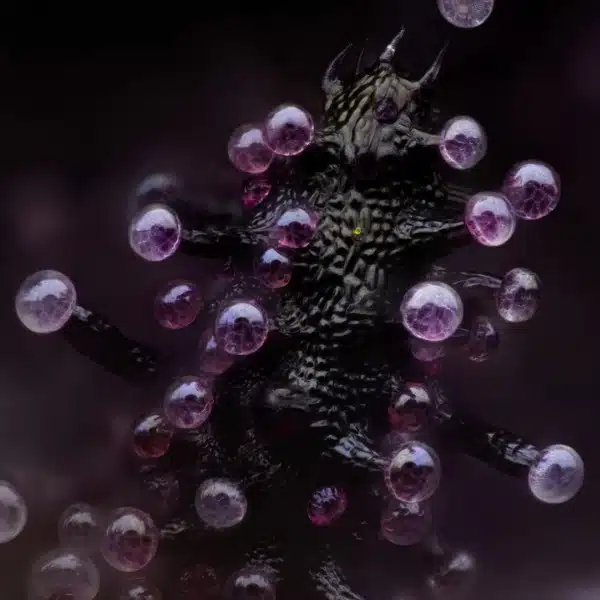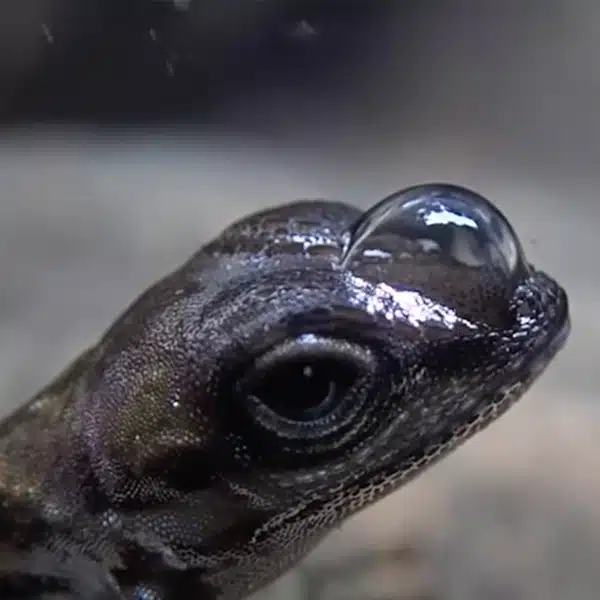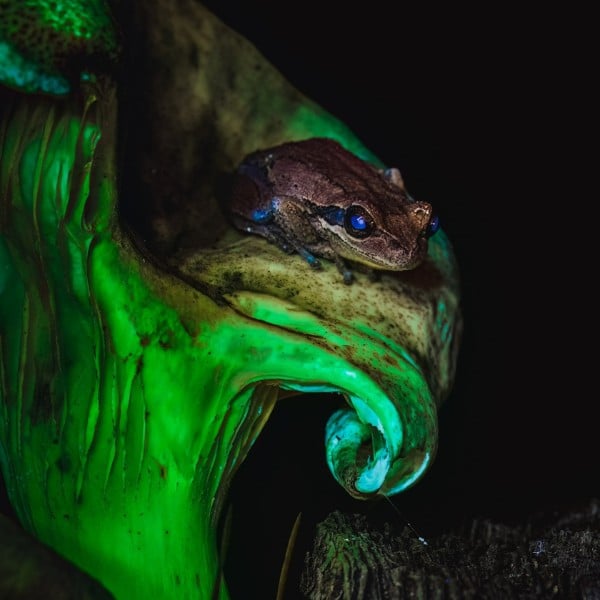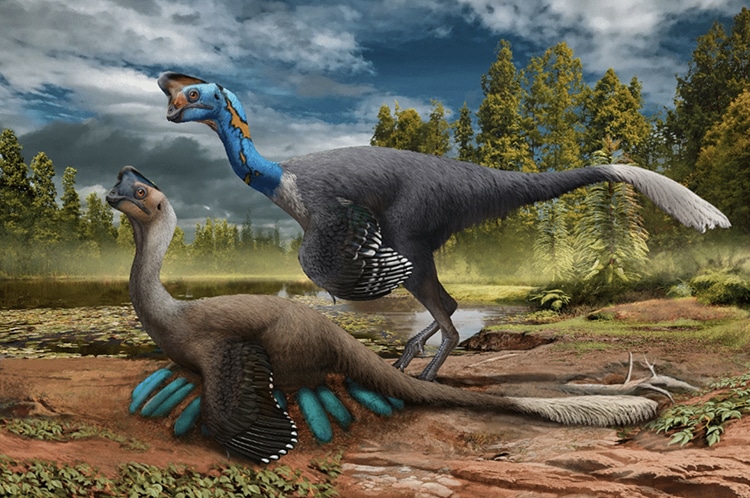
An artist's rendering of an attentive oviraptorid theropod dinosaur on its next, next to its mate, in Jiangxi Province, China, 70 million years ago. (Photo: Zhao Chuang/PNSO)
Dinosaurs were devoted parents, or so suggests a new discovery made by an international team of paleontologists. Working in southern China's Ganzhou City, the crew discovered a nest of dinosaur eggs—some containing fossilized embryos—with a parent dinosaur sitting directly on top. The researchers released their monumental discovery in a recent paper in Science Bulletin.
The dino family in question are oviraptorosaurs, specifically of the subgroup Oviraptoridae, who roamed Asia in the Cretaceous Period (145 to 66 million years ago). The newly-discovered nest dates to about 70 million years ago. It is the first of its kind and has already taught paleontologists a lot about oviraptorid behavior.
According to a statement, author Dr. Shundong Bi says, “This is the first time a non-avian dinosaur has been found, sitting on a nest of eggs that preserve embryos, in a single spectacular specimen.” The oviraptorid is a bird-like theropod, with three-toed feet and hollow bones. The adult skeleton discovered in the oviraptorid nest is only partial, with mostly the lower half of the dinosaur remaining. However, the position of the creature over its nest suggests it was brooding directly atop the clutch of eggs, much like modern birds do. Other examples of oviraptorids atop nests have been discovered in similar positions, but scientists debated whether this was evidence of incubation or simply a practice of guarding one's young.
This new clutch of eggs helps to answer this question of oviraptorid behavior. The nest contained at least 24 eggs, with at least seven containing fossilized bones of the embryos. Some of these eggs were ready to hatch, while others required further development. This asynchronous development suggests that the warmth of the adult was encouraging eggs at the top of the clutch to develop faster. The final clue that the oviraptorid was in fact incubating its eggs was the evidence of the team's oxygen isotope analyses. This showed that the eggs had in fact been kept at high temperatures, like bird eggs, suggesting ongoing parental presence. Interestingly, the adult oviraptorid's sex has not been determined and could be either the mother or father.
According to Dr. Matt Lamanna, a member of the team and the Carnegie Museum of Natural History co-interim director, “This kind of discovery—in essence, fossilized behavior—is the rarest of the rare in dinosaurs… This dinosaur was a caring parent that ultimately gave its life while nurturing its young.” The reproductive behaviors of the oviraptorid may help shed light on the development of the behaviors of later prehistoric creatures and even modern birds.
Lastly, another interesting behavior has become apparent from this once-in-a-lifetime fossil discovery. The adult oviraptorid fossil shows a collection of small pebbles in the region where its stomach once lay. This suggests the dinosaur swallowed rocks to aid in digestion—the pebbles are called gastroliths, or “stomach stones.” This discovery will help researchers deduce more about what the oviraptorid and its relative dinosaurs once ate. Dr. Xing Xu, another primary author of the paper, concludes, “It’s extraordinary to think how much biological information is captured in just this single fossil. We’re going to be learning from this specimen for many years to come.”
A nest with an adult oviraptorid apparently incubating a clutch of eggs (some of which have fossilized embryos) is the first of its kind to be discovered.

The fossilized forearms, pelvis, hind limbs, and partial tail of the adult oviraptorid theropod. Eggs are visible as well, including at least three that contain embryos. (Photo: Shundong Bi/Indiana University of Pennsylvania)
The discovery has already taught researchers a lot about the dinosaur's behavior and diet.
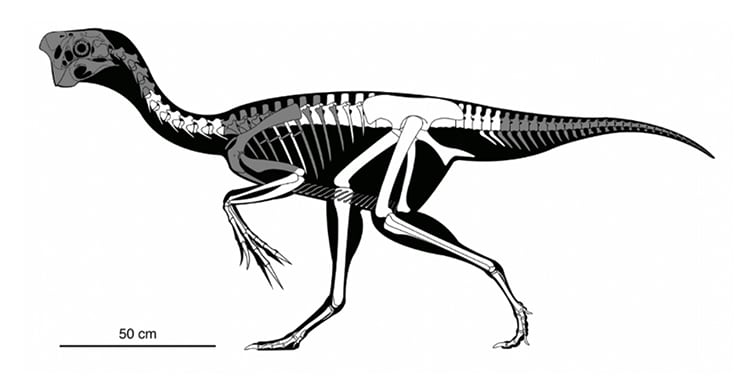
Skeletal reconstruction of an adult oviraptorid showing the discovered bones in white. (Photo: Andrew McAfee/Carnegie Museum of Natural History)
h/t: [Gizmodo, ScienceAlert]
Related Articles:
Interactive Map Reveals Which Dinosaurs Roamed Your Hometown Millions of Years Ago
Fossil Discovery Unlocks the Mystery of What Happened the Day the Dinosaurs Died
220-Million-Year-Old Dinosaur Footprint Is Discovered by a 4-Year-Old
World’s Oldest DNA Is Discovered in a 1.2-Million-Year-Old Mammoth
















































































